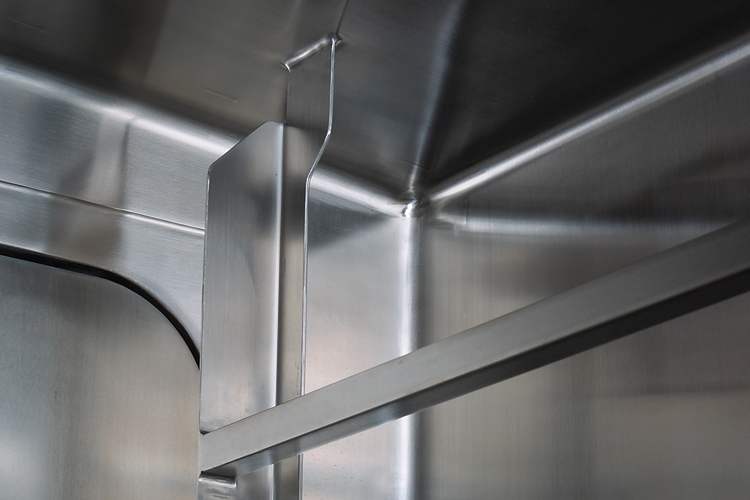It is possible to choose other bends if you require but additional lead time and tooling charges may apply.
Cgmp sheet metal minimum radius.
In low carbon steel sheet metal the minimum radius of a bend should be one half the material thickness or 0 80 mm 0 03 inch whichever is larger.
Since commercial sheet metal bending can be done with less concern for stresses caused during forming operation the radius can be near zero for thin sheet metal.
It requires an inside bend radius of at least 6x the material thickness.
5052 h32 aluminum bends in about the same way as mild steel.
Aluminum is typically thicker and stronger and requires more force to bend as well as consideration of edge conditions and punch nose radii.
In order to make the stretching smoother generally take r2 5t the maximum fillet radius should be less.
Minimum inside bend radius for sheet metal recommended inside bend radius for sheet metal parts should be equal to material thickness.
Sheet metal parts with a minimum of 0 9mm to 20mm in thickness can be manufactured.
We go beyond the general rules of sheet metal bending as our customers want tight bend radii for sheet metal parts.
3003 h14 is extremely ductile almost like copper.
Ductile material works great with small bend radii and short flange depths.
The minimum bend radius data shown in these charts is measured to the inside of the bend.
Bend radii minimum bend sizes it is most economical to use a single bend radius throughout the design but if necessary you can utilize multiple radii.
The minimum fillet radius between the flange and the wall of the tensile member should be greater than 2 times the thickness of the plate ie r2 2t.
The tables below show bend radii and minimum bend sizes for materials and tooling combinations stocked by protocase.
So if the metal plate is 75 thick you would multiply 4 x 75 3 so your minimum inside bend radius would be roughly 3 times the thickness of the material in this case or 2 25.
The minimum bend radius for aluminum when working with aluminum over sheet metal several variables need to be considered.
Use this document to choose values that are both manufacturable and meet your needs.
But for harder materials e g.
However it is important to know that this is just a broadly applicable rule of thumb you can follow for making bends in steel.
Avoid large sheet metal parts with small bent flanges.

